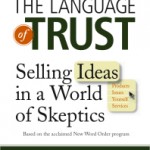The silver bullet for attracting more readers
Media coverage can boost your visibility, helping you to attract more clients. Joanne Cleaver, a fellow member of the American Society of Journalists and Authors, suggests in her guest post that you expand your ideas of the topics on which you’d like to be quoted.
The silver bullet for attracting more readers
By Joanne Cleaver
If you know enough to write regularly about investing and financial planning, you know enough to be quoted. But how can you elevate your hand-built riser into a national platform?
The best way to gain expert status is to be quoted by journalists. Their responsibility is to present credible information in context. When your expertise adds clarity, insight and experience that brings an article to life, you will become a go-to source. That establishes you as an expert and builds your reputation .
That’s all well and good. But how do you get started? Here’s how to break the anonymity trap of not being quoted because you aren’t known, and not being known because you’re not being quoted.
First, sign up for HelpAReporterOut.com.
For $19 a month, HARO delivers to your inbox a daily list of requests from journalists looking for immediate sources for stories they are working on now. Simply reviewing the requests helps you detect what journalists need.
Your initial reaction will be to respond only to requests that seek financial experts. With 50 or more HARO requests daily, it’s only a matter of time before you find a request for precisely your technical and advisory expertise. And offering quotable, useable financial insight is a great way to win media mentions.
But you have more to offer than professional commentary. Your life experience—as a parent, a business owner, a volunteer—also is invaluable fodder. For example, you might respond to a reporter search for parents who have recently navigated the college application and financial aid process. Your pitch would pivot on your experience as a parent who’s better informed than most on financial topics, but you’d also be interviewed about your frustrations and feelings about financial aid.
Responding to a HARO request that appears tangential to your professional expertise does two things: it opens a relationship with the journalist, and it is a chance to showcase personal insight that rounds out your professional reputation and presents you as human, empathetic and approachable.
Both types of media mentions—professional and personal—build reputation and blog readership…as long as that silver bullet hits your target audience.
____________
A former daily newspaper deputy business editor, Joanne Cleaver helps professionals develop and deliver the right messages to the right audiences through media and communication training. Learn more at http://wilson-taylorassoc.com/media-training.





I think it’s important to note there is a free version of HARO available. Less filtering, but media requests none-the-less.
Thank you for pointing that out, Dave!
Dave, the free version might be worthwhile for those just wading into the world of earned media. But HARO posters typically are swamped with responses, and triage chronologically. Those who respond risk have the best chance of getting in on the opportunity – and paid subscribers get an early jump.
Thank you for clarifying, Joanne.